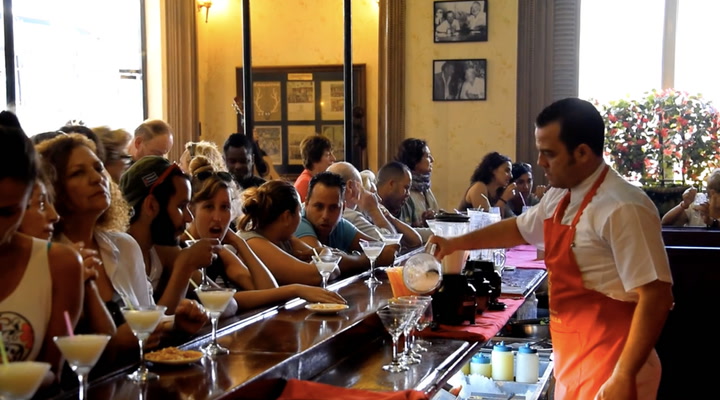Summary
Here’s how Rick Steves finds his favorite restaurants in Europe.
Rick Steves is committed to eating like a local. He doesn’t want “best of” and “top 10” lists; he wants to hear the local language as he digs into fresh food, rather than dining at places that compromise quality to cater to tourists. Steves is the TV host, guidebook author, and founder at the helm of Rick Steves’ Europe, renowned for his travel philosophy of prioritizing local alternatives over expensive hotels and restaurants.
In a recent interview with GoTravelDaily, Steves shared some of his best tips for dining out in Europe, including how to be a more thoughtful consumer and avoid tourist traps. There are a few golden rules Steves follows when choosing restaurants in Europe that can help travelers eat more locally, seasonally, and culturally.
“It’s being part of the party, rather than just part of the economy,” Steves said.
Step Away From the Sightseeing Streets
Sometimes seeking the very best restaurants can lead to frustration, Steves noted, because if it’s the best, it’s famous — meaning locals and tourists vie for those reservations.
Instead, be willing to explore lesser-known eateries that are equally delightful. “Every night, I’m choosing a place to eat dinner, and I want to be free to go where the spirit takes me, where the mood is, where the serendipity is good,” Steves mentioned.
When choosing a restaurant, examine the actual street where you plan to dine. Is it a high-rent area, where businesses pay substantial rent to attract diners? Alternatively, consider a nearby street where restaurants may have less overhead and aren’t overwhelmed by tourists. Many establishments on busier streets aren’t locally owned, making them less appealing to residents, Steves suggested.
“I will find a place on the low-rent street a few blocks away, thriving with happy, local customers,” he added. “If you find that place, and it feels good to you because it’s packed with locals eating, that’s going to be a great dinner.”
Pick a Menu That Speaks to You — in the Local Language
A significant warning sign for tourist-centric restaurants, according to Steves, is a prominent sign announcing, “We speak English” or “No frozen food.” These places typically feature a pre-printed menu in multiple languages that remains unchanged year-round.
“Everything’s wrong about this, and you’re going to be eating with other tourists,” Steves remarked.
Instead, he recommends seeking spots with smaller, handwritten menus that reflect what’s fresh and in season. If the menu is in the local language, even better, as that indicates they cater to locals, not tourists.
“A smart eater can go to a good restaurant, look at the menu, and know what month it is and where they are,” Steves advised.
For example, many travelers insist on ordering French onion soup in Paris, irrespective of the season. While this dish is a winter staple, some restaurants will serve it in summer to cash in on tourist dollars rather than sourcing fresh ingredients.
Eating seasonally allows one to explore and learn about the region’s culture, Steves emphasized. When restaurants cook with the seasons and adhere to a zero-kilometer philosophy of serving local goods, “it’s a beautiful thing,” he stated.
Locals Matter More Than Locale
Discovering family-owned and -operated establishments, Steves recognized, is a fulfilling way to enjoy exceptional meals while supporting local businesses. The character and charm found at these venues, often run by generations of the same family, offers a memorable travel experience.
“When you go to a small, family-run place, run by people who have found their niche, they really enjoy it,” he said. “And you feel like they know their staff; they know their customers — it’s people to people.”
This focus on local culture through food encourages travelers to slow down and absorb the experience as they dine.
“I’m no gourmet critic of food, but I know a great memory when I see one,” Steves reflected.
Steves prefers not to patronize places that direct their resources toward advertising or climbing food rankings. What he cherishes most about local restaurants is their inviting atmosphere. He seeks out eateries where profits reinvest back into the community and the environment thrives due to the dedication of the restaurant staff.
“What distinguishes a good trip is not, ‘How good was your gelato?’ but the people you were licking it with,” Steves concluded. “It’s those connections that carbonate the whole experience.”





